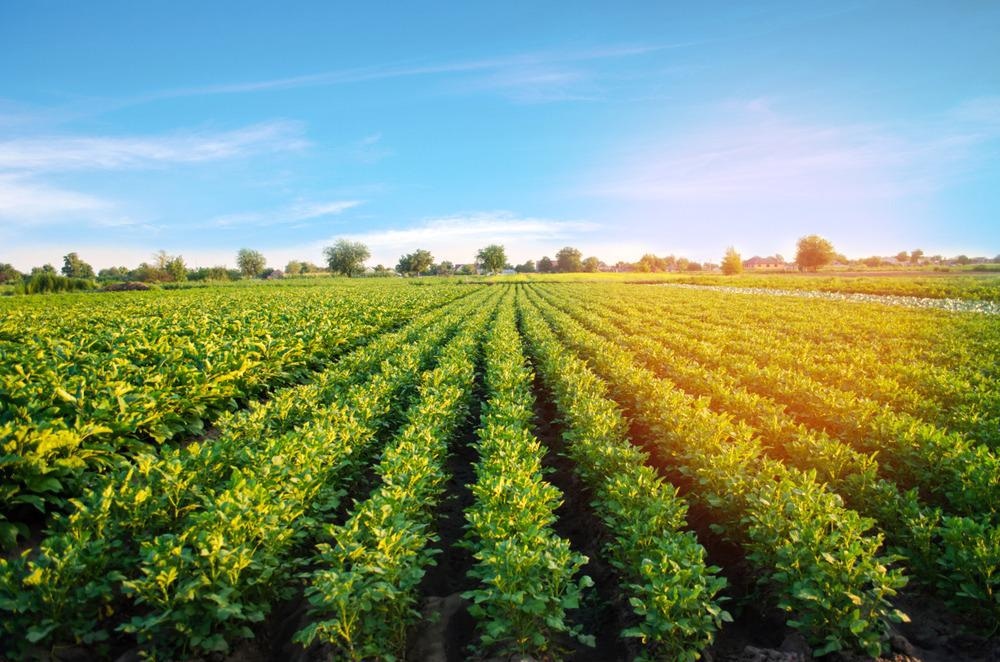Organic food production involves the cultivation of crops without the use of chemical fertilizers. Although organic fertilizers maintain a better soil structure and ecosystem, crop yields are low. Hence, there is a need for sustainable agricultural techniques to ensure a better food supply to meet the global demand.

Study: Effect of nitrogen and zinc nanofertilizer with the organic farming practices on cereal and oil seed crops. Image Credit: Andrii Yalanskyi/Shutterstock.com
In a recent article published in the journal Scientific Reports, authors used nitrogen (N)- and zinc (Zn)-based nanofertilizers with organic farming practices to cultivate cereal and oil crops and compared the field trial with chemical fertilizer-based agriculture practices. Compared to fields under chemical fertilizers, the authors observed higher yields and better plant growth by combining organic manure, nanofertilizers, and biofertilizers.
Application of Nanotechnology in Agricultural Techniques
Excess nitrogen and phosphate fertilizer content in soil negatively impacts the ecosystem and adds to environmental pollution, creating the need for an efficient technique to improve nutrient uptake by plants. To this end, agricultural methods based on the advanced concepts of microbiology, chemical engineering, biotechnology, and polymer science enable the controlled release of nutrients into the soil.
Nanotechnology has received considerable attention from agricultural scientists as they explore the potential of nanofertilizers to enhance the target delivery of nutrients and increase the efficiency of nanofertilizers. Surface-functionalized nanofertilizers with a good surface area to volume ratio enable the slow release of nutrients.
Previous studies on the application of nanofertilizers at the laboratory level or in small-scale field trials showed a reduction in the use of fertilizers in bulk while enhancing crop productivity.
N and Zn Nanofertilizers
In the present study, the authors used wheat, pearl millet, mustard, and sesame crops to compare the crop productivity in two agricultural practices, first by employing conventional chemical fertilizers, named treatment 1 (T1) and then by an organic farming practice, named treatment 2 (T2).
The organic farming treatment involved a combination of N and Zn nanofertilizers, organic manure, and biofertilizers. As per previous literature and the authors' knowledge, this is the first work that uses N and Zn nanofertilizers in large-scale agronomic trials. Furthermore, the authors compared the productivity results obtained from T1 and T2 for all the four chosen crops.
Since the efficiency of nanoparticles depends on their morphology and physical properties, transmission electron microscopy (TEM) was employed to determine the morphology of N and Zn nanoparticles. Further characterization of nanoparticles determined their hydrodynamic size, zeta potential, viscosity, and pH values.
Research Findings
TEM results revealed that the mean diameter of N and Zn nanoparticles were 28.3 and 22.3 nanometers, respectively. The zeta potential and hydrodynamic diameter values were 42.4 millivolts and 56.6 nanometers for N nanoparticles, while for Zn nanoparticles, the corresponding values were 34.2 millivolts and 39.4 nanometers.
The viscosity and pH values obtained for N nanoparticles were 9.65 centipoises and 4.6, and for Zn nanoparticles, the corresponding values were 8.63 centipoises and 3.2.
The authors monitored the trial using demonstrations in 160 fields between 2019 and 2021. They grew four principal food crops of the selected region: wheat, pearl millet, mustard, and sesame, with four replicates for each crop type.
To monitor the growth and development of the plant, they measured key parameters like height, tillers, or branches. The trial results revealed that the height of sesame and wheat plants was similar under T1 and T2. However, the authors observed a slightly taller growth in pearl millet and mustard plants under T2.
Other parameters such as tiller number in pearl millet, spike length in wheat, mustard seeds per siliqua, and sesame branches per plant showed no significant difference between T1 and T2.
An incremental impact with 12.5% higher tillers per plant and 7.03% higher spikelet numbers in wheat crops under T2 than T1 was observed. Moreover, the ear head length was 4.9% higher in pearl millet, capsule per plant of sesame was 6.71% higher, and mustard siliquae number per plant was 9.1% higher in T2 than in T1.
Under T2, the authors recorded a 5.35% increased yield in wheat, 24.2% increased yield in sesame, 4.2% increased yield in pearl millet, and 8.4% increased yield in mustard than under T1. The increase in the crop yield is due to the enhanced development of the plant's key parameters. Further investigations revealed a decreased soil pH, increased soil carbon content, and enhanced potassium and zinc levels under T2.
Conclusion
In this study, alternative practices to combat the excess use of fertilizers without any significant effect on yields were explored. Moreover, the present work demonstrated effective nutrient management by combining nanofertilizers with organic manures in organic farming.
Reference
Kumar, A., Singh, K., Verma, P. et al. (2022) Effect of nitrogen and zinc nanofertilizer with the organic farming practices on cereal and oilseed crops. Sci Rep; 12, 6938. https://www.nature.com/articles/s41598-022-10843-3
Disclaimer: The views expressed here are those of the author expressed in their private capacity and do not necessarily represent the views of AZoM.com Limited T/A AZoNetwork the owner and operator of this website. This disclaimer forms part of the Terms and conditions of use of this website.